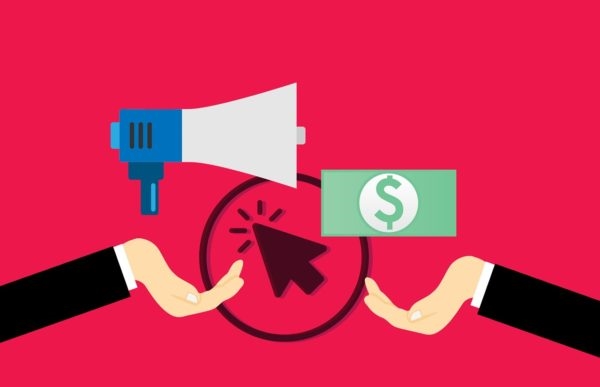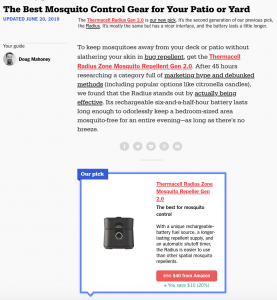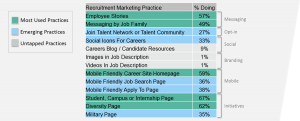— July 25, 2019

mohamed_hassan / Pixabay
We all know the facts: That video advertising can be wildly successful, that it can build brand awareness like no other and drive sales and conversions at multiple stages of the sales funnel.
Many of us, however, struggle to implement it correctly. Video advertising can be tricky, especially since there are so many moving pieces and so many choices that you need to make with PPC campaigns. This can put some marketers off from engaging in video PPC advertising, but it’s often at their detriment.
All you need, after all, is the right information, the right tools, and a little creativity.
The information part, as it turns out, is where most people struggle most, so we reached out and interviewed three top PPC experts who have a ton of experience leveraging video advertising for their clients. In this post, we have incredible insights from AdEspresso’s Ad Specialist Paul Fairbrother, Co-Founder of Abacus Agency’s Jeff Goldenberg, and Shakr’s own Head of Acquisition and Media Buying Expert Mikkel Hoimyr.
Let’s take a look at what they had to say.
What Makes Video So Important in the PPC World?
Video advertising is important in PPC. We’ve heard it a million times. But why exactly is video so important?
Paul: Short video can get across a lot more information than an image. However, not that many advertisers use video as they mistakenly think video is difficult to produce. So if you use video you’re automatically ahead of a majority of your competitors.
Jeff: I can speak to paid social specifically. Stopping the thumb scroll is the single most underrated marketing challenge you’ll face on Facebook and Instagram. Folks scroll through 300 linear feet of timeline a day, and they don’t just stop for strangers. Using video ensures that you are doing everything you can to stop thumbs and give your content a chance to make an impact.
Mikkel: Social media is a video-first world, video is the name of the game. Video consumption on Facebook, Instagram, Youtube, Tik Tok, etc., is greater than ever. The struggle for attention is real, and PPC advertisers feel it. A few seconds is all you have to make an impact. Video ads capture attention up to five times longer than image ads. In other words, video brings you a long step towards increased attention and engagement.
I think it’s telling that each of our experts offered slightly different answers, showing the vast number of benefits that you can get from this medium. And as for Paul’s note that people think video is difficult to produce, it can be– but it doesn’t have to be. Scalability in video campaigns is essential, and that’s something we’re excited to offer brands here at Shakr. You can learn more here.
Approximately What Kind of ROI Can Brands Expect From Video Ad Campaigns on Facebook?
ROI is pretty much the name of the game, right? How much can you get back on the ad spend you invest? While results from PPC platforms can vary so wildly, here’s what our experts had to say:
Paul: In the US, prospecting campaigns might see an ROAS (return on ad spend) of 2, meaning for every $ 1 you invest you get $ 2 back out. To improve this figure, focus on increasing the AOV (average order value) by upselling with additional products. Of course, the headline figures don’t tell the full story as Facebook Ads result in a lot of additional sales that don’t track when the person that views the ad passes the link on to other people that then buy.
Although a ROAS of 2 might sound low, this can be profitable by getting repeat sales to increase the CLTV (customer lifetime value). So, customer retention is as important as customer acquisition.
Jeff: It depends, so I couldn’t just give you a set number. Everything is different. If a client has a bad landing page or application flow, Steve Jobs’ himself couldn’t come up with ads that could overcome the leak. Well, maybe he could. But most people, myself included, couldn’t. So many factors go into determining ROI that it’s like a puzzle. Figure out your Lifetime Value, try to break even, and grind your way down to an efficient CPA. Creative will be your biggest challenge, so don’t treat it as an afterthought.
Mikkel: If you are currently running image ads on Facebook and Instagram, use your current ROAS as a benchmark. The goal is that the increase in ROAS from video minus the added cost of video production leads to a total increase in ROI. Use a tool like Shakr to make great video creative without increasing the cost of creative production, allowing you to create video at scale affordably and quickly. When done right, the increased ROAS of video outweighs the increased cost of creative production.
Do You Recommend Different Types of Video at Different Stages of the Digital Sales Funnel?
Establishing ad funnels can be complicated, but it only makes sense that different types of videos may be more effective at some stages than others. Our experts shared valuable insights here.
Paul: At AdEspresso, we ran a $ 1,000 experiment and found that animated video produced a cost per lead that was 50% cheaper than using face-to-camera. This was for B2B marketing where face-to-camera is often overused, so it may vary for different sectors. Take a look at the types of videos your competitors use and then try to create something different that stands out.
Jeff: If you need to use long-form video on social, put it at top of the funnel and use it to create remarketing audiences that are more pure than what you could target natively. You can create custom audiences based on how much of a given video they’ve watched– including a video ad. With the Clear History tool on Facebook rolling out, this on-platform retargeting could become even more valuable than it already is.
Mikkel: Yes. You have different levels of knowledge about your target at different stages, which can be leveraged into your video messaging. The more data you have on an audience, the more you can tailor the video to them.
Prospecting videos for Facebook and Instagram should be general enough for a broad audience, which will then let the pixel shine with its campaign optimization magic. Only separate ad sets when it’s absolutely crucial with unique creatives for different audiences. The goal is to limit the number of prospecting ad sets as much as possible. And On Youtube, you can leverage intent data from Google search history to make videos for people that are in the market to buy what you are selling.
What Metrics Should PPC Advertisers Be Watching for Video Ads?
When you’re reviewing a campaign, there’s so much to look at, and it can be hard to separate vanity metrics from the ones that are particularly important. Our experts had invaluable information about what metrics we actually need to be watching.
Paul: For performance marketing – where you’re trying to get leads or sales – aim to get enough conversions from the video ad to at least break even, by optimizing for conversions. You can then build a video view custom audience and retarget these viewers to get more conversions.
A mistake that a lot of advertisers make is that they optimize the first video purely for video views, meaning that they don’t get any sales at the top of the funnel. It’s hard to make a profit if you are only getting conversions lower down the funnel, you should aim for every ad to cover its costs.
Jeff: For social specifically, the KPIs vary based on business model, what can be tracked, and budget levels. Overall, you want to track a conversion cost as close to the bottom of the funnel as you can. So for companies that sell direct to customer, a cost per acquisition/sale or ROAS (return on ad spend) is what should be obsessed over. I prefer CPA over ROAS, because when you compare it to your Lifetime Customer Value, you are forced to account for gross margin and not just revenue. If you use ROAS optimization (which works great on FB/IG), make sure you target a high enough ROAS to drive your margin.
Mikkel: I look at several:
- ROAS is the only metric that really matters at the end of the day, no matter the ad type. I recommend using Facebook’s attribution tool to get a full picture of ROAS across Facebook and Google properties, compare 2-3 attribution models and 2-3 look back windows on a regular basis. If your ROAS is not satisfying, try iterating your creatives, landing pages, or targeting to boost CTR and conversion rates.
- Understanding the lifetime value of an acquired customer is also important when analyzing ROAS. The 28-day ROAS of an ad might be 2X. However, the lifetime value of an acquired customer may be far greater if you are able to build long-lasting relationships.
- Pay attention to CPM. But keep in mind that high converting audiences are more expensive, compare changes in CPM for the same audience only. Increasing CPM over time is something every advertiser struggle with as the ad auction gets more crowded and increase in ad inventory is not able to keep the same pace. Pay attention to new placements where CPMs may be lower.
- An added benefit of video ads in terms of performance metrics is the rich level of video engagement insights. Check the correlation between video engagement and ROAS.
What Are Some of the Biggest Misconceptions You See Around Video Advertising?
There are a lot of myths and misunderstandings floating around about video advertising. We wanted to set those straight.
Paul: Some advertisers are reluctant to get started with video advertising as they assume it has to be Steven Spielberg quality. This is a mistake as videos don’t need to be too polished to still succeed on social media, in fact, less polished videos often do better. Any modern smartphone is more than good enough to record a short video.
Jeff: Not enough testing. Quitting too early. Drawing wrong conclusions. Using Google Analytics only to judge results. Spending too small. Optimizing for conversions without a budget. Not segmenting audiences. Same creative for every persona and funnel stage. Unsocial creative. It seems really easy but it’s actually really hard.
Mikkel: That video is too expensive. In reality, video is affordable and scalable with the right tools, making it a great choice for PPC campaigns.
Do You Have Any PPC Video Tips You Want to Share?
Want to learn more about increasing conversions, decreasing CPAs, and just plain running more successful ad campaigns? Here’s what you need to know!
Paul: We ran another a $ 1,000 experiment in collaboration with the video hosting company Wistia. We found that a good thumbnail image can nearly halve the CPA (in this case cost per app install). So, don’t just choose the thumbnails at random, instead start by picking one good video and then A/B testing custom thumbnails until you find the one that gives the lowest CPA.
Jeff: We have something at Abacus called the 1-5-8 rule. We use it as a test for the creative. Basically, since most viewers are gone by the 8-second mark, we need to build ads backward from how they used to be built. So when we watch an ad we want to make a strong impression with the 1st second, tell most of the story by the 5th second and assume people are gone by 8th second. That way we ensure we match the creative with the consumption.
Mikkel: I have a few that have worked well for me.
- An amazing benefit of video over static images is the ability to create audiences based off of video engagement, which means that you can build a sequence of video ads. A person who watched 90 % of your video might be super engaged and ready to take action, while someone that watched 25 % needs more warm-up. These two levels of engagement might, therefore, benefit from being in different ad sets with different ads.
- You need to continuously test new ad tactics and formats, but do not test everything at once. Find a system where you can create new video creative regularly and pay attention to creative best practices.
- Pay attention to more than one platform. Facebook, Instagram, and Youtube are obvious choices and the most advanced ad channels for video. But pay attention to other channels, I personally believe Tik Tok has enormous potential.
Conclusion
And there you have it– some of the most valuable information about video PPC advertising from some of the top experts in the field. Having worked with each of these experts personally, I can attest that their knowledge and experience have allowed them to create some outstanding campaigns, and now you have some of the same information that can help you do the same.
Digital & Social Articles on Business 2 Community
(39)








